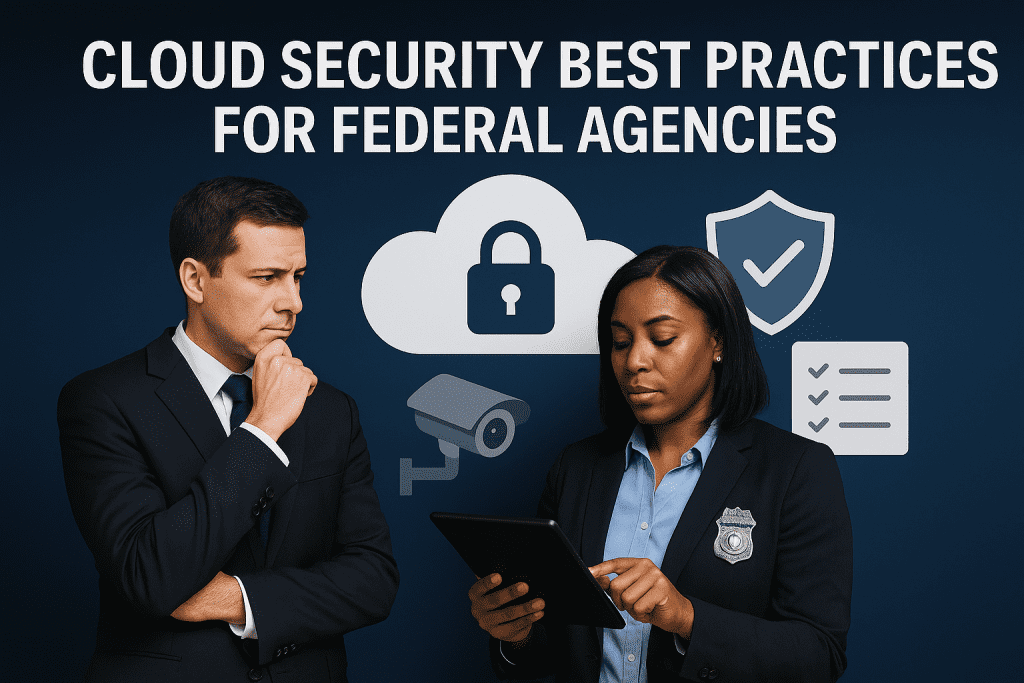Cloud Security Best Practices for Federal Agencies
In today’s rapidly evolving digital environment, federal agencies are increasingly migrating their workloads to cloud environments to improve efficiency, scalability, and accessibility. However, with this transformation comes the critical responsibility of safeguarding sensitive data and ensuring compliance with stringent government regulations. Implementing cloud security best practices is essential to maintaining trust, protecting mission-critical information, and ensuring uninterrupted operations.
1. Implement Zero Trust Architecture (ZTA)
Zero Trust assumes no user or device should be trusted by default, even within the network perimeter. Federal agencies should:
Enforce multi-factor authentication (MFA)
Apply least-privilege access policies
Continuously monitor and verify all access requests
2. Encrypt Data in Transit and at Rest
Encryption ensures sensitive government data remains protected, even if intercepted. Agencies should:
Use FIPS 140-2 validated encryption standards
Employ secure VPNs and TLS for data in motion
Encrypt cloud storage with strong key management policies
3. Conduct Regular Security Audits and Compliance Checks
Federal agencies operate under strict compliance frameworks like FedRAMP, FISMA, and NIST 800-53. To maintain compliance:
Perform regular vulnerability scans
Audit access logs and configuration settings
Engage third-party security assessments
4. Adopt Robust Identity and Access Management (IAM)
IAM ensures only authorized personnel can access sensitive systems. Key steps include:
Centralizing identity management
Automating provisioning and de-provisioning of user accounts
Integrating with cloud-native IAM solutions
5. Leverage Continuous Monitoring and Threat Detection
Real-time monitoring helps detect and mitigate threats before they escalate. Federal agencies should:
Deploy Security Information and Event Management (SIEM) solutions
Integrate with Security Operations Centers (SOC) for 24/7 oversight
Utilize AI-driven anomaly detection tools
6. Implement Secure Cloud Configuration Management
Misconfigurations are one of the leading causes of cloud breaches. Prevent them by:
Following CIS Benchmarks for cloud platforms
Enforcing automated compliance checks
Using Infrastructure as Code (IaC) with security validation
7. Provide Ongoing Cybersecurity Training
Human error remains a significant risk. Regular training ensures staff can identify and respond to threats effectively:
Conduct phishing simulation exercises
Offer annual cybersecurity certification refreshers
Educate on data handling best practices
Benefits of Strong Cloud Security for Federal Agencies
Implementing these best practices not only strengthens data protection but also:
Enhances public trust in federal systems
Reduces operational disruptions
Ensures adherence to federal compliance mandates
Improves agency resilience against cyber threats
Cloud security protects sensitive government data, ensures compliance with federal regulations, and safeguards against cyber threats.
Federal agencies often follow FedRAMP, FISMA, and NIST SP 800-53 guidelines.
Zero Trust minimizes unauthorized access by continuously verifying users and devices before granting any level of access.








